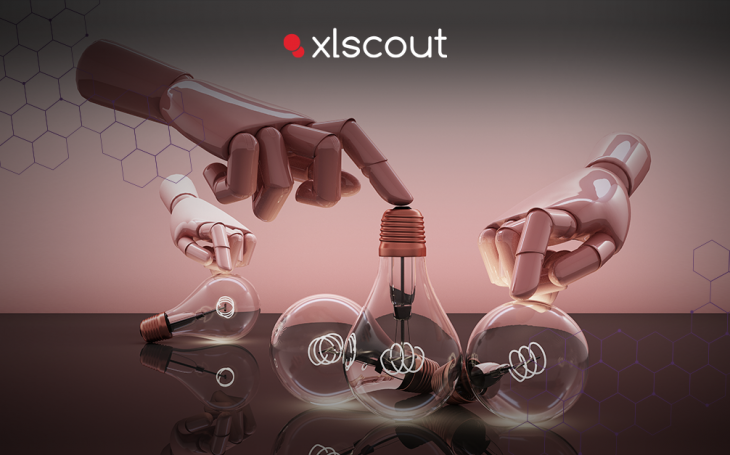
Artificial intelligence (AI) advancements have transformed the way we approach creativity. Creativity, which was once the sole domain of human imagination, is now being redefined as machines become more capable of mimicking it. AI is poised to unleash a new era of creativity defined by its own unique strengths, from creating original art pieces to designing new fashion trends. This paradigm shift calls into question our fundamental assumptions about creativity and invites us to reconsider what human and machine intelligence can accomplish together.
In this blog post, we’ll look at how machines are redefining creativity and what that means for future generations.
The Rise of AI-Driven Creativity
The rise of AI-driven creativity is an intriguing advancement in the field of artificial intelligence. As AI technologies have advanced, they have become increasingly capable of producing creative works such as paintings, music, and writing, which were previously thought to be the sole domain of humans.
The use of generative adversarial networks (GANs) and other machine learning techniques to create new and original works of art is one of the main drivers of this rise in AI-driven creativity. GANs can be used to generate images, music, and even text that are similar to or entirely unique to existing works.
The factor driving AI’s creativity is the systems’ ability to learn from large datasets of human creative works. AI systems can learn to create new works that are similar in style or genre by analyzing and identifying patterns in these datasets.
The Impact of Machine Learning on the Creative Process
Machine learning has had a significant impact on the creative process, fundamentally altering how artists and writers approach their work. Here are some examples of how machine learning has influenced the creative process:
1. Design and composition: Machine learning can be used to assist in the design and composition of creative works. Designers, for example, can use algorithms powered by machine learning to generate color palettes or layout options for a design project.
2. Idea generation: Machine learning can be used to generate new ideas, assisting in innovation. Machine learning algorithms can identify patterns and generate new ideas analyzing large datasets.
XLSCOUT’s Ideacue employs AI and assists in idea generation. We have created an Idea Playground powered by Generative AI for inventors.
Read to know more: How XLSCOUT’s Generative AI is Transforming the Invention Process – Xlscout
3. Automation: Machine learning can help artists and designers focus on higher-level tasks by automating some aspects of the creative process. Machine learning algorithms, for example, can be used to automate tasks such as image resizing and audio transcription, freeing up time to focus on more creative tasks.
The creative process has been greatly influenced by machine learning. It introduces new tools and techniques for producing more effective and impactful works. It should be noted, however, that machine learning is not a replacement for human creativity. However, it is a tool that can augment and facilitate it.
The Challenges of AI-Powered Creative Thinking
We must address a number of issues before AI-based creative thinking can realize its enormous potential. The following are some of the major challenges of AI-based creative thinking:
1. Lack of creativity: While AI can generate new ideas and designs, there is debate about whether AI-generated works are truly creative in the same way that human creations are. Some argue that artificial intelligence lacks the intentionality and emotional depth that human creativity possesses.
2. Intellectual property: Who owns the rights to AI-generated works raises legal and ethical concerns. We may need to revise intellectual property laws to account for these new forms of creativity as AI becomes more capable of producing original works.
3. Dependence on technology: As AI-based tools become more common in the creative process, there is a risk that people will become overly reliant on them, resulting in a loss of creativity and innovation.
Towards the Future: Exploring the Impact of AI on Creativity
Machine-driven creativity is an exciting and rapidly evolving field in the future. Here are some of the possible developments in the coming years:
1. Increased human-machine collaboration: Artificial intelligence (AI) may be used to augment the creative process, allowing artists and designers to work more efficiently and effectively. This may imply increased human-machine collaboration, with machines providing suggestions and ideas that humans can refine and develop further.
2. New forms of creativity: As AI-based tools improve, we may witness the emergence of entirely new forms of creativity that are only possible with AI’s assistance. AI-generated music, for example, may include sounds and instruments that do not exist in the physical world.
3. Integration with other technologies: AI-based creative tools can be integrated with other technologies, such as augmented and virtual reality, in order to create immersive and interactive experiences.
Conclusion
To summarize, machines and AI are undoubtedly pushing the boundaries of creativity in a variety of fields. It is important to remember, however, that creativity is about more than just the end result. It is also about the creative process, the inspiration that drives human artists, and the subjective interpretation of their works. While machines can produce impressive and innovative results, they lack the emotional and personal touch that human creativity has. Collaborations between AI and human creators may become even more exciting and transformative in the future. However, human perspective and experience will ultimately shape and define creativity for future generations.

